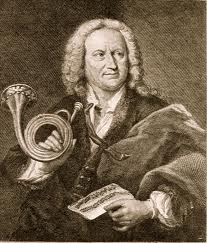Many of Bach’s cantatas and oratorios include instrumental sections, such as sinfonias or overtures, which are musical masterpieces in their own right. Bach freely interchanged his compositions as he saw fit, borrowing from his instrumental works as needed to fill out his vocal works, and vice versa.
This Concerto in D major is based on the first three movements of the Easter Oratorio, which according to musicological research may well have been performed separately as a three-movement instrumental concerto.
The first two movements (Allegro and Adagio) are taken verbatim from the Oratorio. The third movement is based on the Oratorio’s following choral number, with the original orchestral opening and accompaniment, and vocal lines arranged for instruments. The first and third movements of this concerto are scored for a large orchestra of trumpets, timpani, oboes, bassoon, strings and continuo. Majestic openings contrast with more quiet, introspective sections, including a section featuring solo violin in the first movement and a section with a small violin-oboe-continuo chamber ensemble in the third movement.
The second-movement Adagio is a mellifluous oboe solo over string accompaniment, serving as an introspective contrast to the exuberant outer movements.
Concerto in D Major for Oboes, Bassoon, Trumpets, Timpani, Strings and Continuo
BWV 249
By Johann Sebastian Bach






